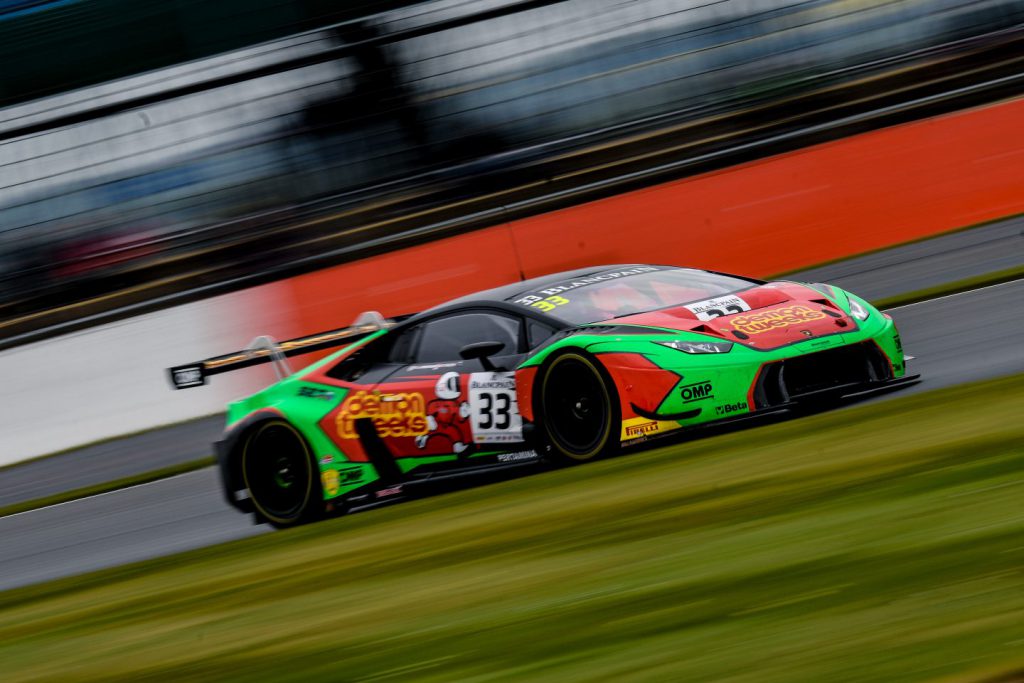
We know what you are thinking – that is a pretty strong statement to make. We agree. However, we are willing to say that any one of the points mentioned below, will make a difference to your overall pace and move you further up the timing sheets. Besides, what have you got to lose? Continue reading for 12 guaranteed ways to make you a faster driver.
So, in no particular order, let’s get into it.
1. Chassis Alignment
It can be very easy sometimes to assume that it is possible to just start the engine, head out onto the track and expect the car to handle exactly as you would expect it to. However, there is often some lap time potential hidden away inside the chassis geometry, particularly if your race car has been converted from a road car.
But how can you extract that potential and turn it into real performance gains?
The best place to start would be to ensure that the car is sitting properly with the weight correctly distributed on each corner as well as front to rear. Having a correctly balanced car will help to alleviate some poor handling characteristics such as instability under braking or cornering better in one direction than the other.
For example, having more weight over the right front corner than the left can result in the car reacting slower on initial turn in for right hand corners.
Getting the correct weight distribution on your car can be achieved via the use of a set of corner weight scales. This allows you to accurately see how much of the cars weight is situated over each corner of the car. You may find that you have uneven weight distribution between the left and right sides of the car.

Adjusting the corner weights is a case of changing the ride height on one of the corners of the car, which is achieved by changing the spring seating position. So, if you have more weight over the front right-hand corner than the left, you would either need to lower the ride height on the left or raise the right. Bear in mind that any ride height changes that you make on one corner will have an effect on the rest of the car.
When looking to measure and change the chassis corner weights, make sure that all of this is done with the anti-roll bars disconnected as this can throw out the readings.
The other way to ensure that you are getting the most out of the chassis is to adjust the suspension geometry in terms of camber, caster and toe. These setup adjustments serve to change how the surface of the tyre tread sits on the road surface.
To start off with camber, this is the angle of the tyre that is measured vertically. Camber is used when setting up a car to counteract the forces encountered when cornering and allow more of the tread surface of the tyre to be in contact with the track.
With perfectly vertical being measured as zero, a tyre which leans inwards at the top is measured as negative camber, while the opposite, where the top of the tyre leans outwards, is measured as positive camber.
Most race cars will be set up to run with negative camber, as this allows the outside tyre, to where the weight is shifted, to achieve a larger contact patch due to the cornering forces. The end result of this being improved grip through the corner.
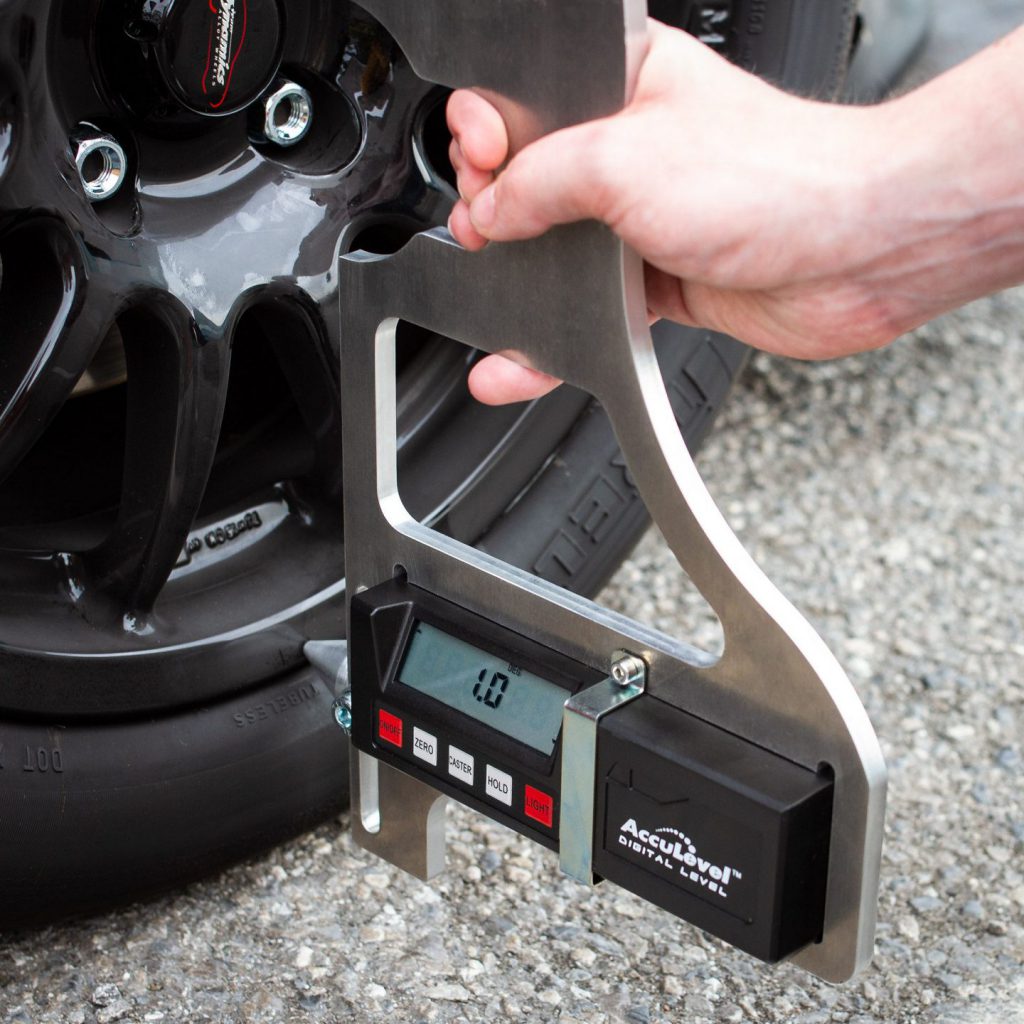
Although adding negative camber increases the grip through corners, it is worth bearing in mind that it will have a side-effect. In this case, a car with a large degree of negative camber will have a smaller contact patch when driving in a straight line. While this will lessen the rolling resistance of the tyre, it will also mean that braking stability and performance will be reduced and it will be harder to get the power down. Adding camber will also increase the wear on the inside edge of the tyre as well as adding additional heat through greater friction.
The other major change that can improve the performance of the car is by adjusting the toe. This is a measurement taken as if looking directly down on top of the tyre. If the tyre is perfectly parallel, then there is zero toe on the car. If the leading edge of the tyre is pointing towards the middle of the car, this is known as toe-in, while the opposite is known as toe-out.
Typically you would add toe-out on the front axle to compensate for an effect called “camber thrust”, which is where a free rolling tyre on an angle will follow a curve rather than a straight line. Adding toe-out will adjust the slip angle to be more natural and combat this tendency.
Toe-in is more commonly used on the rear of the car as it creates understeer, which is particularly useful when trying to tame a car that suffers from excess oversteer on corner exit.
As with camber, the drawbacks are increased wear and heat, but adding toe will also result in more drag in a straight line as the tyre is being dragged across the track surface.
Unfortunately, there is no magic combination that will work at any race track the you turn up at. This is because each track has its own unique characteristics such as the number of corners, bumps amongst others. You will need to experiment with finding the ideal setup for a particular circuit. You will also find that wet weather conditions will require you to make other changes due to decreased corner speed and the need to ensure that more of the tyre remains in contact with the road.
Over time, you will come to work out what settings work best for you and your car and learn how to better utilise them to your advantage.
2. Fresh Tyres
This may seem an obvious addition to our list, but it is a very valid point. Being the only point of contact between the car and the road surface, tyres in competition play a major role in how the car behaves on track.
As tyres are put through their paces out on the track, they build up heat. This increases the grip level of the tyre which, in turn, improves the performance. But all of this comes at a cost, tyre life.
If you imagine what a tyre goes through when it is fitted to your car. It starts out as a nice, fresh new tyre with plenty of tread across the surface. Then, either through heading out on track or with the aid of tyre warmers, if allowed by your chosen championship, the tyre surface begins to heat up. As the race begins, the heat increases further and the surface of the tyre starts to soften and melt, causing it to wear down as it is scrubbed across the tarmac. Once the race is over, the car comes to a halt and the tyre begins to cool down and harden off again.
At this point the tyre tread looks very different to how it did when it was first put on the car. It will appear rough and may have collected what is known as “marbles”, or small bits of rubber which stick to the surface of the tyre when running off line on the way back to the pit lane. Sometimes, these marbles are removed using a tyre scraping machine to try and restore a smooth surface, which, again, adds another heat cycle through the surface of the tyre.
Now, depending on the team, or level of competition, these tyres may instantly be replaced for some new ones prior to the next race. However, at club level competition, it is not uncommon for a driver to use the same tyres for two, three or even four more races. Some may even make them last for a whole season!
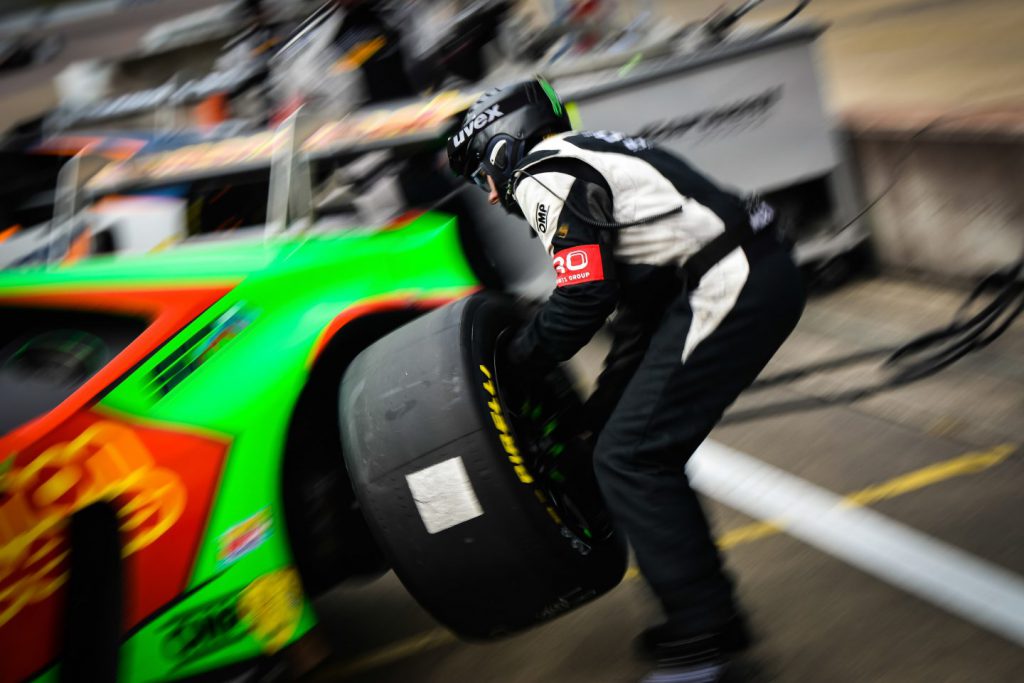
But taking into account that every time the tyre is used – or indeed not used for a long period of time in between races – that they are going through a dramatic state change, it is easy to see that over time this will affect the overall performance of the tyre.
But this state change isn’t just limited to tyres that are regularly used. You may have a set of brand new tyres sitting in your garage that you have saved for a special occasion, but have been sat for a long period of time. Even though they are brand new, you may find that when that fabled “new tyre day” comes around that it feels like you have wooden tyres fitted to your race car for the first few laps, such is the level of hardness that they have reached from being sat idle for so long.
So, if you have had your current set of tyres on the car for some time now, having a set of brand new tyres fitted will make a large difference to your lap times as the grip that will be available to you will be far superior.
It is worth mentioning at this point, that if you are running a treaded tyre as part of your championship regulations, there are benefits to having the tyre tread shaved. Now this may seem slightly counter-intuitive to cut a significant amount of off your brand-new tyres before you even have a chance to use them. But there is a reason behind this.
Due to treaded tyres having grooves cut into the surface to help cut through surface water in wet conditions, this will reduce the structural rigidity of the tread of the tyre. As such, when the tyre warms up and the rubber starts to soften, the tread blocks will start to move about, much like a skyscraper in an earthquake. The resulting feeling for the driver is a vague response through the steering wheel and the feeling that the car has very little grip on the road surface.
This is why many drivers choose to have their new treaded tyres shaved, to help reduce the amount of “sway” in the tread blocks, resulting in a more positive feel through the wheel.
3. Tyre Pressures
To continue on the theme of tyres, once you have fitted a new set of tyres, the potential for lap time improvement doesn’t end there. Tyre pressures can have a profound impact on your overall speed on track.
The way that a tyre behaves when under load and the temperature that it operates at will vary depending on the pressure of the air inside the tyre. Having a lower tyre pressure can provide more traction due to a larger part of the tyre in contact with the road surface, but this will also cause a larger amount of rolling resistance and cause the car to be less stable through the corners.
In contrast, having a higher tyre pressure can help the tyre deal with higher loads and provide better response on initial turn-in to the corner. However, a higher tyre pressure can lead to less compliance, resulting in a loss of traction.
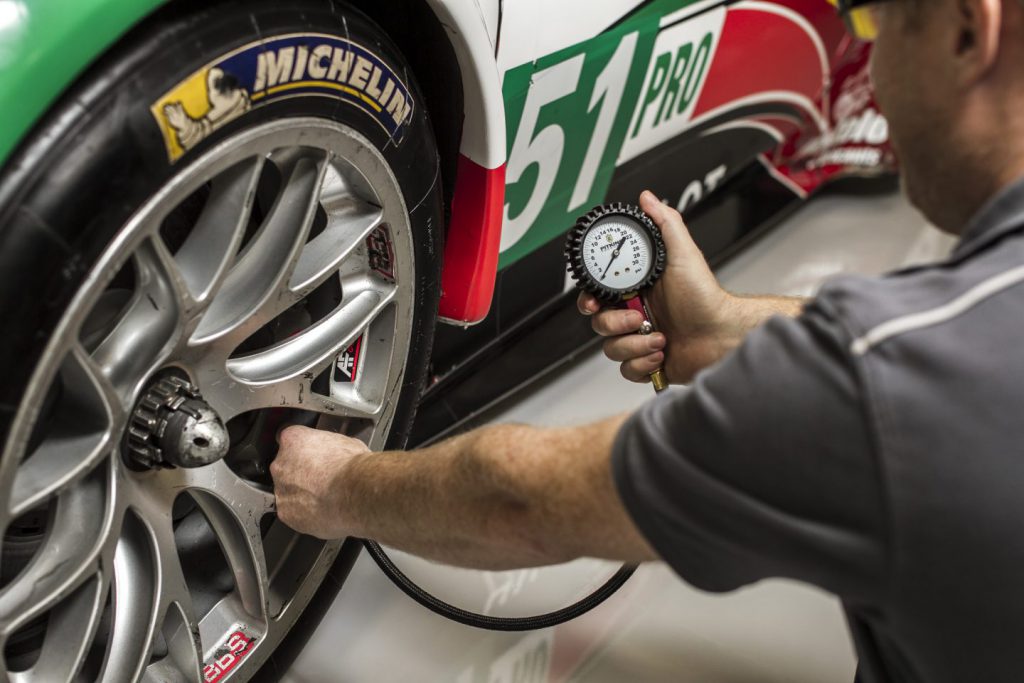
There is one other thing to bear in mind when talking about tyre pressures. By its own nature, the air we breathe, and pump into our tyres, has an element of water in it. As such, this can make a difference to how the tyre pressures behave over the course of a race. This is due to the air molecules heating up and changing density, thus changing the pressure inside the tyre.
One way to avoid this is to fill your tyres with Nitrogen. This means that you will get more stable tyre pressures throughout the race and allow you to maintain a better overall pace until the chequered flag waves.
4. Predictive Lap Timers
With the advancements in GPS technology, it is now possible to install a lap timer that can, not only display your last lap time and current lap in real-time, but offer a predicted lap time function.
This means that your lap timer will tell you if you are on course to either improve your lap time or record a slower lap. Often, this will also update in split times, giving you several opportunities around the course of the lap to tell if you are likely to record any improvements.

So how is this helpful?
Well, this feature is particularly useful if you are trying to find some different lines through a corner or trying to carry more speed. If it is working, you will see that your predicted lap time delta will improve. You will also know what part of the track you are able to find time so that you can focus on getting that part right.
Not only can you view a real-time update of how your lap is progressing, certain lap timer systems such as the Racelogic VBOX LapTimer use an LED system to display your speeds on corner entry and exit compare with your best lap time. If you carry more speed into a corner, the LEDs will glow green but will change to red on the exit if this additional speed is not translated through the entire corner. This is an extremely useful tool when looking to improve your driving technique or racing lines, as it provides a visual indication of how you are driving.
5. Cooling System
Heat can play one of two roles in motorsport. On one hand, certain components need a degree of heat in order to work correctly, such as tyres, oil etc. However, too much heat in certain areas can cause an engine to not run at its optimum performance.
When looking at keeping this excess heat away from critical engine components, the first port of call would be the radiator system itself and its associated coolant.
Due to the additional work that an engine is required to do in the heat of competition, a traditional radiator that was fitted to a standard production car will find it difficult to cope. Fitting a high performance radiator can effectively increase the amount of fluid that can be cooled at any one time due to an increased capacity. This, when combined with a thermostatically controlled fan, allows the engine temperatures to drop to a more suitable level for competition.
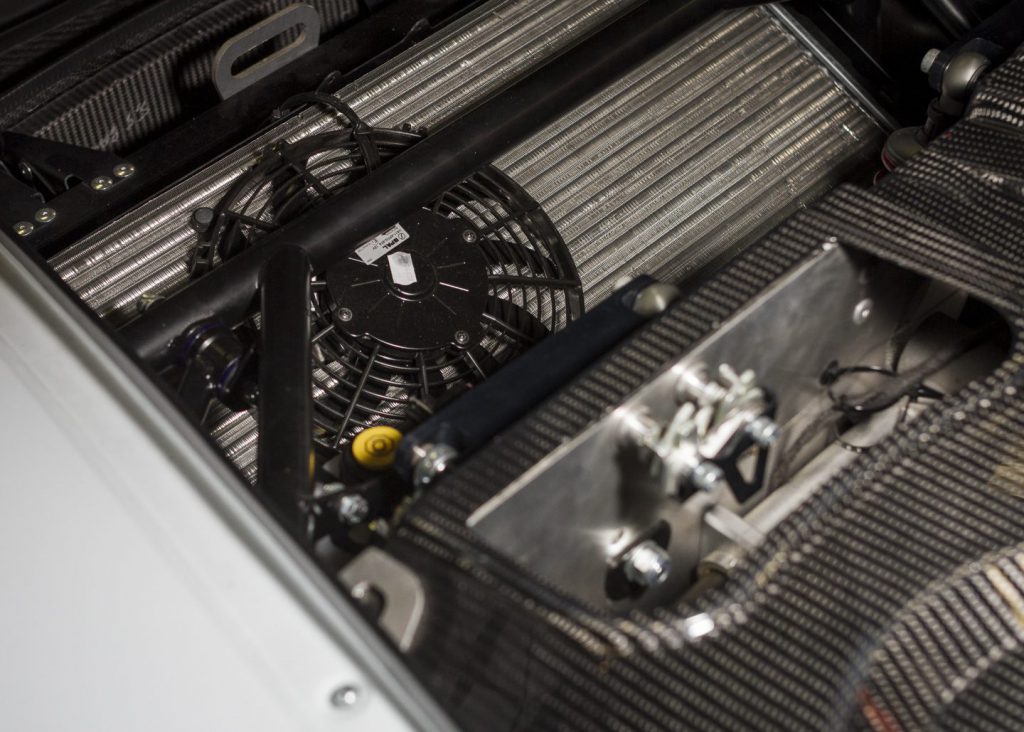
However, there are some cases where making changes to a radiator system are not allowed, such as Group N specification cars. In this particular case, it is also a requirement to retain the standard heater systems. One of the tricks of the trade is to run with the heaters flat out when competing. While this may make it uncomfortable inside the car, it also takes some of the heat away from the engine and allows it to operate better.
In order to get the most out of your cooling system, it is recommended to use a high quality specification of coolant that will, not only protect components from corrosion, but also helps to lower the operating temperature of the engine.
If you find that your highly tuned competition engine is still running on the hot side, using a coolant additive, such as Red Line Water Wetter, will help to further lower the operating temperature of the engine.
For a more in-depth look at how to keep on top of your engine cooling, check out this blog article on the cooling system.
6. Driver Health
The way to becoming a faster driver is not solely down to improving the performance of the car. You, as the driver, have an important part to play. After all, the car won’t drive unless you provide the input.
But alongside your talent behind the wheel, there are other things that you can do to help improve your driving and overall performance on track.
If you take a look at most of the professional racing drivers, you will notice that they are slim with a high level of fitness. There is, of course, a reason for this. Even though it may appear to be an easy job to sit in a seat and drive a car for anywhere between 20 minutes to 2 hours, both the physical and mental demands placed on a driver are high.
Due to the increase in forces from driving quickly, there is a lot of exertion that is placed on the drivers’ body. This can cause you to tire more quickly which, as a result, will manifest itself in a drop off in lap times. Likewise, this tiredness will also affect your concentration, increasing the possibility of missing braking or turn-in points.
So how do we avoid this downturn in performance? The first thing to do is to work on your fitness and endurance as this will put you in a better state physically to deal with the demands of racing. Not only will you be stronger and better able to maintain control over the inputs of the car, but you will be able to continue with this over the course of the race.
As part of any good fitness regime, keeping control of your diet and ensuring that you are getting the right amount of nutrients and supplements into your system to help support your physical activity and muscle growth.
All of this can be done away from the track in preparation for your next event. But what can you do on the day of the event that will help with your performance on track? Well, the best thing to do is to ensure that you stay hydrated. This is obviously important if it is a particularly warm day, but even on those colder events, keeping yourself hydrated is essential to helping you maintain your concentration and focus.
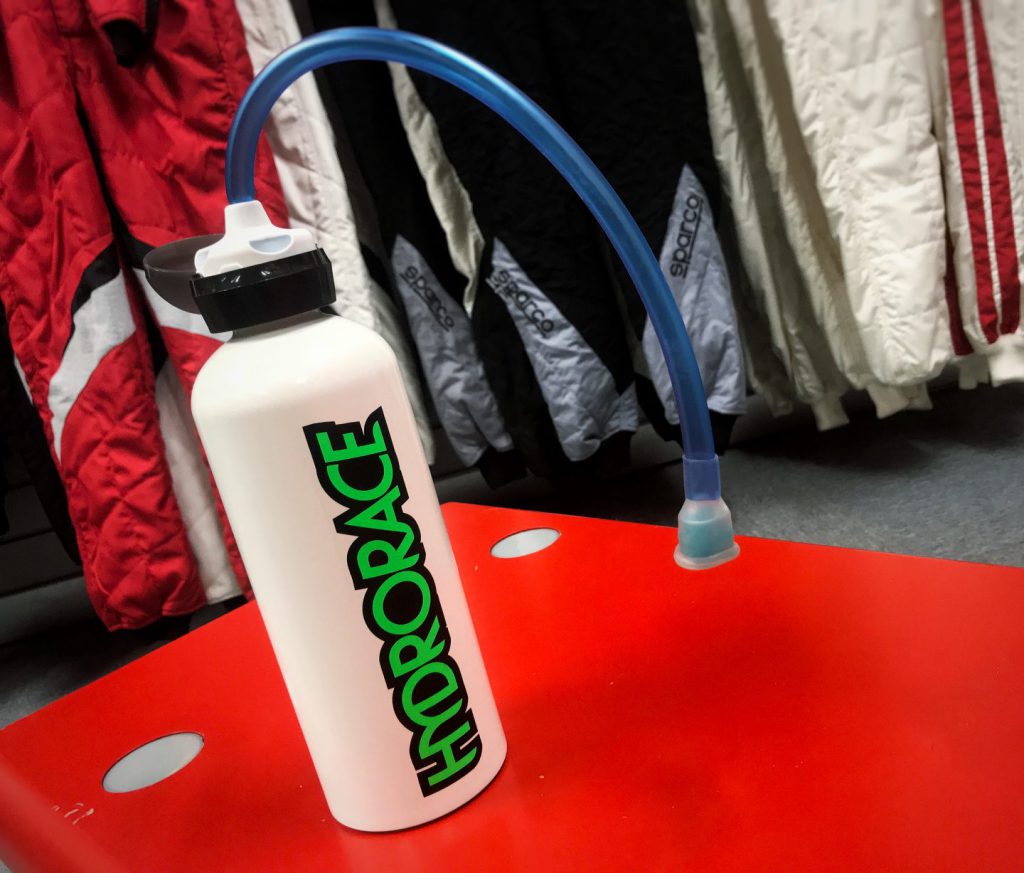
As part of staying hydrated, there are certain nutritional products that can help to improve muscle performance as well as improve your alertness and endurance while driving. Products such as those from P1 Nutrition are scientifically proven to boost energy, focus and stamina, allowing you to be at your best while in the heat of competition.
7. Oils and Lubricants
Although a relatively simple task, regularly changing the lubricants in your car can actually have a profound effect on how the engine and transmission perform. Over time, engine oils start to break down and lose some of their protective properties. So, keeping them fresh can help to keep the friction as low as possible.
Removing as much friction as possible from inside the engine and gearbox helps to reduce the amount of effort required for them to operate. When talking about the engine, this means that less of the power that is produced is taken up trying to move the pistons up and down inside the cylinders. This in turn allows this power to be sent on through the drivetrain and on to the wheels, allowing for improved engine performance.
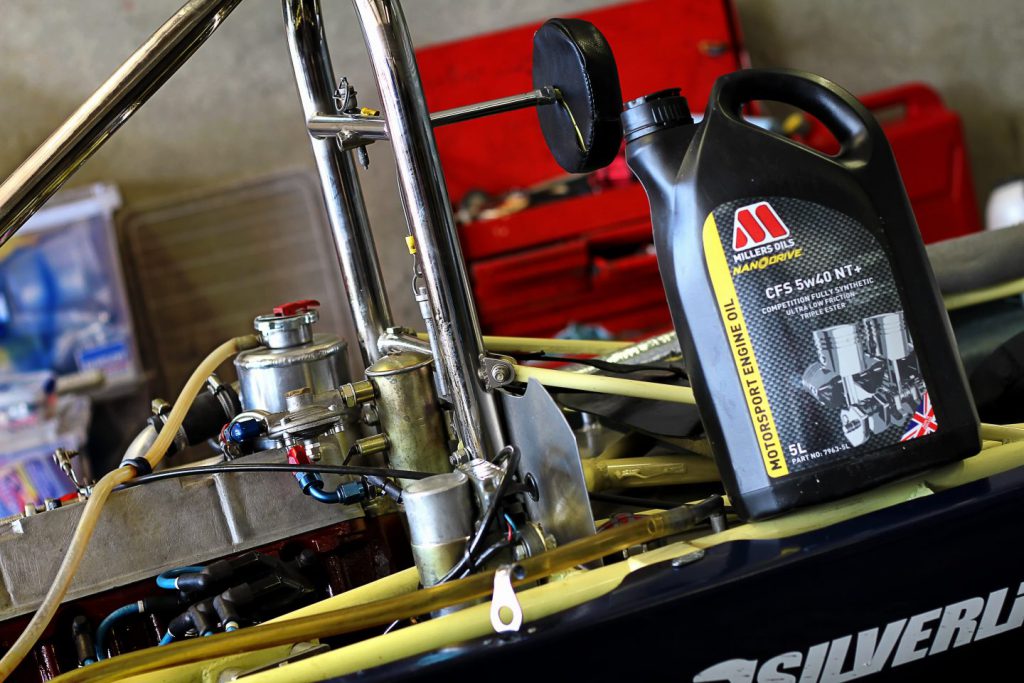
For the gearbox, having reduced friction allows the gear shifting action to become smoother, meaning that it is possible to perform quicker shifts. Not only does this make the driving experience better, it also reduces the time between selecting each gear, meaning that you can spend more time accelerating.
When changing your oil, it is also worth adding a friction additive to help reduce the overall friction inside the engine. Not only will this help the engine to run better, it will also reduce the wear on engine components and improve the fuel usage.
8. Circuit Knowledge
They say that knowledge is power, well this is certainly true when it comes to motorsport.
In circuit racing, whether you have driven a particular circuit before or not, there is always something new to learn every time you head out on track. But with limited chances to run some laps, how do you make the most of the time that you do get behind the wheel?
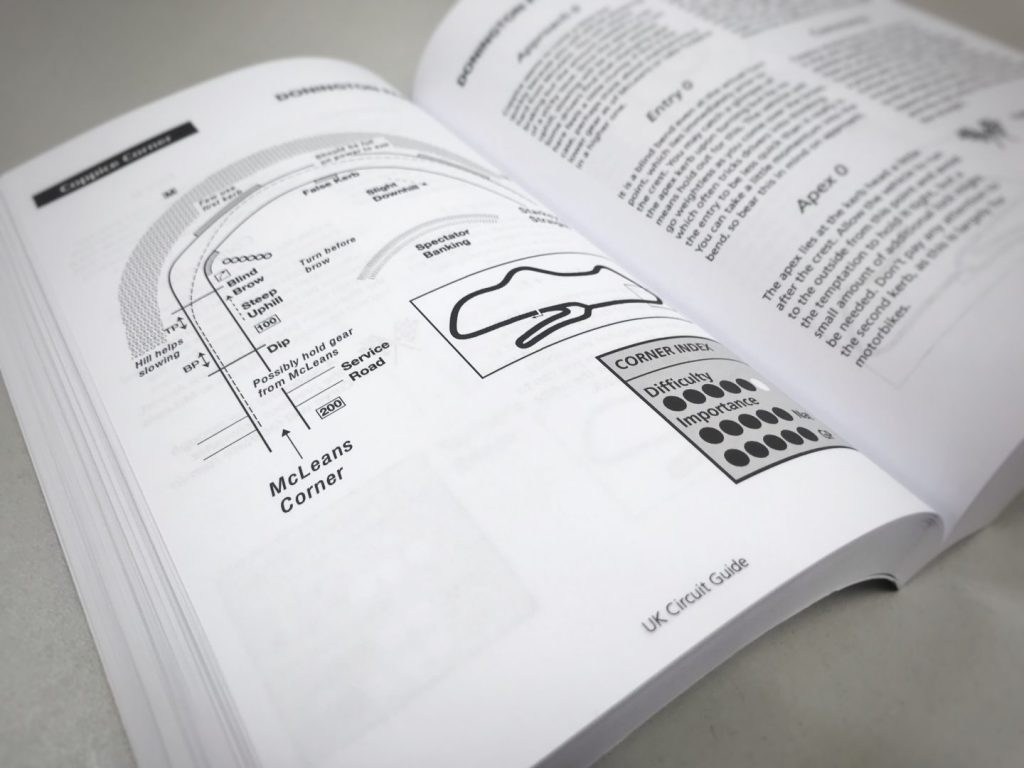
The first option is to pick up a copy of the comprehensive UK Circuit Guide or talk to some of your fellow drivers. Many, of whom, will have a lot of experience at the track, as they will have, no doubt, picked up some useful local knowledge over the years such as what parts of the track have the best grip, or an ideal line for a certain corner. More often than not, they will be happy to answer your questions.
However, you may find that some of your fellow competitors are a little less willing to part with their pearls of wisdom in fear that you may use it to better effect and beat them across the finish line. So, what do you do next?
Well, remember that test you passed when you obtained your license? The chances are that you received some form of instruction in that process from a member of the Association of Racing Drivers Schools. As the name suggests, this organisation exists to provide drivers with expert tuition in a bid to help them improve their skills.
We spoke with Guy Minshaw, who has competed in Ford Fiesta XR2s along with many other classic race cars throughout his career, about his experiences of driver coaching.
“One of my best memories was getting to Donington Park at 5:00am, prior to my first XR Challenge round, and spending 2 hours with instructor Malcolm Smith walking the track.”
Having spent considerable time at each corner pointing out key points such as braking markers, lines, apex points and more, the end result could not have been much better. “His shared knowledge” he continues “led to a pole position, lap record and a race win by nearly 30 seconds!”
“Accepting that you don’t know everything, and listening to people that do, was a massive eyeopener to me and I have had a great respect for him ever since.”
This is just one example from the many people who have had driver coaching from a qualified instructor over the years. Having that one-on-one tuition will, almost certainly, find you an improvement in lap time.
9. Weight
Don’t worry, we aren’t forcing you to take out that gym membership that may only get used once every 3 months or have one less roast potato for Sunday dinner, although there are benefits from this. No, what we are talking about is the weight of the car.
As most racing series specify a minimum weight for the car, what you do with that weight can have a profound affect on how the car handles.
The first target is to make sure that you can get as close to that target weight as possible. Having extra weight in the car not only makes you slower in a straight line, it can also affect the handling of the car through the corners due to increased weight transfer and inertia.
If you are over the minimum weight, there are various ways of helping to alleviate some of this excess weight from the car. As most race cars will already have any excess interior trim removed, the key is to carefully consider the weight that you will put back into the car, with the main items being the seat, harness etc.
There are various lightweight alternatives available for the majority of the required safety components. For example, you could replace the seat with a carbon fibre shell, or maybe one of the lightweight Sparco QRT fibreglass seats. There are harnesses with lightweight adjusters and buckles, fire extinguishers with aluminium bottles and many other alternatives to help try and keep the weight down.
If you have tried all this but are still struggling with carrying excess weight, there are other options that may be available. If your chosen championship allows it, you could replace the glass windows with a plastic window kit, or you could swap some of the body panels such as wings and bonnet for lightweight alternatives.
If, however, you are in the fortunate position that you have to add extra weight to make the limit, this can actually work in your favour. This is because you are able to add this extra weight in a place that can actually benefit the handling of the car. As explained earlier under Chassis Alignment, getting the correct balance of the car, both laterally and longitudinally, can have a profound effect on how the car handles.
Depending on the amount of weight that you need to add, and the part of the car that could do with extra weight to help the balance, you can use this extra ballast to help reduce understeer or oversteer. However, one of the most popular places to add weight is alongside the driver. This is to try and even out the weight distribution when the driver is sat in the car.
10. Brakes
Why are we talking about brakes if we are looking to go faster, surely brakes exist to slow you down? Yes, this is true, but having better braking capacity will contribute to your overall lap time.
So how do brakes make you faster? Well, being better on the brakes allows you to extend the amount of time that you are on full throttle by allowing you to reduce your braking distances. This means that your average speed over the lap will increase, thus improving your lap time.
So, what can you change to improve your brakes? This very much depends on the particular championship that you competing in. Certain championships will allow you to install motorsport braking systems that feature larger discs and callipers with your choice of brake pad friction material. However, some championships require you to keep the standard braking system and only allow you to change the friction material.
Let’s say that you are allowed to upgrade your whole braking system. What would you change first?
The largest gains in braking performance can be found from increasing the size of both the brake discs and callipers. A larger disc provides a larger surface area for the brake pads to act upon, with more friction to help slow the wheel down quicker. Larger callipers are not only designed to accommodate the larger discs, but they also provide a higher brake pad clamping force to better utilise the friction material. All of this means that you are able to brake harder and decrease your braking distances.

Other options to consider are stainless steel overbraided brake hoses that improve the feel and consistency of the brake pedal, helping to inspire greater confidence every time that you apply the brakes.
But what if your chosen championship doesn’t allow any changes to the braking system? How can you get the most out of your brakes?
Even those more tightly restricted championships will allow you to change the brake pad friction material, as standard road pads will not be able to cope with the increased temperatures that occur on track. This means that there are a host of different brake pad compounds that are available to you.
There are various types of brake pads available from the different brands to suit various vehicle applications. Each of these are different compounds that have their own individual properties. Some have been designed to work better at prolonged higher temperatures, while others offer higher initial bite but may wear out sooner. As such, there are some compounds of brake pad that are better suited to short sprint races while others are more beneficial for use in endurance events.
Using the best type of brake pad compound for your specific type of racing is important for getting the most out of your brakes. For example, if you were running an endurance type brake pad in a 20 minute race, you would find that there would be very little braking performance as the pads would not be operating in their correct temperature window. Likewise, a sprint based compound in an endurance race would see you running out of brakes very quickly.
Another area that you can improve your braking ability is by using a racing specification brake fluid. By using uprated brake fluid, you can raise the boiling point, reducing the chances of encountering a lack of brakes at some point during the race.
Another secret weapon in your braking arsenal is a brake bias adjuster. If you are allowed to run one of these in your particular championship, it is well worth considering as adjusting the brake bias can dramatically affect the car handling characteristics when on the brakes.
Essentially you are able to control how much of the braking force is split between the front and rear of the car. Sending more brake bias to the rear can improve the rotation of the car under trail braking and can also be useful in wet conditions to reduce locking up the front brakes, be aware though that too much at the rear can cause you to over-rotate and send you spinning.
11. Data analysis through recording systems
You may have noticed that many of the top racing teams are constantly looking at data that has been recorded from their previous session. There are two main reasons for this. The first is to identify if any changes made to the car have worked and to find ways to further improve the handling and performance of the car, while the second is to analyse the drivers on track performance.
Let’s start off with the what it can tell you about the performance of the car.
The first port of call would be to review the recorded lap times and then compare them to a previous session. Have they improved? Did they start to drop off or stay consistent throughout the stint? Did it take a few laps to get the lap times down? All of the answers to these questions can provide an overview of how the changes have affected the dynamics of the car, whether for better or worse performance.
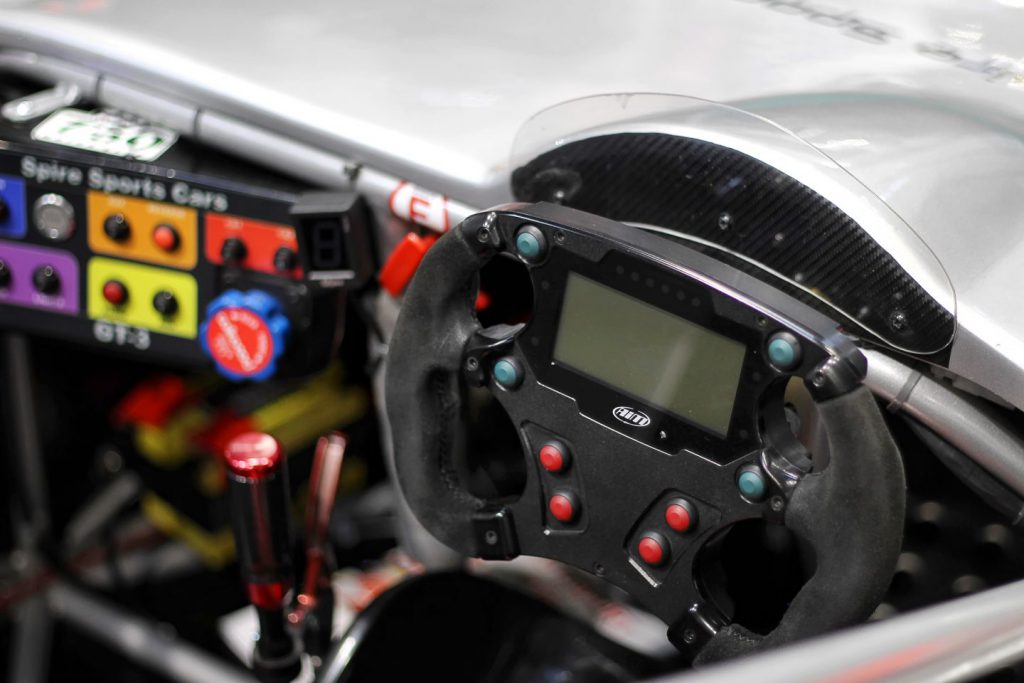
The amount of information that you are able to view and record on a data logging system is dependant on how many sensors that you have installed on your car. Most race cars will have the standard water temperature and oil pressure sensors, but the scope that is available for recording data is enormous. Everything from air flow and pressure sensors to assist with aerodynamic changes to tyre pressure and temperature monitoring systems can be logged and reviewed.
However, when looking at becoming a faster driver, the potential gains that can be found through telemetry is where a data logging system really comes into its own.
When looking to see how a driver performed on track, analysing the data recorded from the car can be invaluable. Everything from throttle and brake inputs through to cornering speed, rpm and g-forces are recorded and can be reviewed after the session or stint. You can view the fastest lap of the session and then compare it with the other laps to see where the time was gained and where mistakes were made.
If the car is being shared by more than one driver, the fastest laps from both drivers can be compared to see where one may be faster than the other. This allows you to see where improvements can be made and how you can record quicker lap times. It is also particularly useful if you have decided to spend some time on track with an instructor, as they will be able to set a lap time in the car and compare it with your best lap. This is an invaluable training tool as it really highlights in plain terms where the time on track can be gained or lost.
Although reviewing data can be a long and more in-depth exercise, the resulting gains that can be made are significant and well worth looking into.
12. Sim Racing
Sim racing has grown in recognition as a genuine training tool for drivers seeking to learn new skills or simply keep themselves sharp between races.
Todays modern simulator software and hardware has developed to the position of being the most accurate that we have ever seen, with incredibly detailed force feedback, laser scanning technology and industry standard physics engines, even motion systems simulating traction loss.
However, this technology is not just restricted to the top teams and specialist businesses. With the advent of simulation software such as iRacing, rFactor 2 and Assetto Corsa along with ever improving hardware including steering wheel systems, pedals, shifters and more, this means that you can get achieve an in-depth and realistic driving experience in the comfort of your own home!
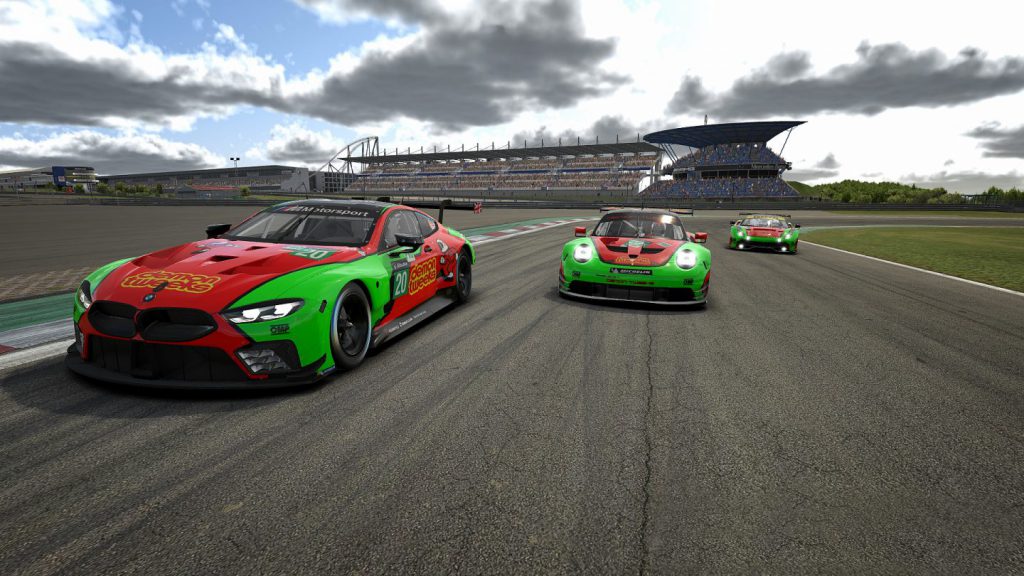
So how can sim racing help me become a quicker driver?
Well, simply spending a time on a simulator turning laps may not help you become a faster driver. No, getting the most out of a session on a simulator involves setting up meaningful exercises to practice.
The best place to start is to identify an area of your driving that you want to improve on. Maybe you want to be more confident on the brakes, work on your racing lines or improve your car control. Whatever it is, there is always something that you can do to help improve your skills which can then be transferred over to the real world.
Let’s say, as an example, that you want to improve your braking ability. One of the advantages of using a simulator is that you can have the entire track to yourself, meaning that there are some things that you can do on a sim that wouldn’t be allowed on a test or track day.
A simple, yet effective exercise to try would be a straight line braking exercise. All you need to do is find a track with a decent length straight and find a suitable, constant, braking marker. Something like a line on the track, an access road or corner distance marker would be suitable, as long as there is enough track on the other side to be able to stop the car.
Once you have selected your chosen reference point, try approaching your marker at a constant speed, anywhere between 70-100 mph would be a good starting point depending on the type of car that you are in. As soon as you reach your specified marker point, hit the brakes with full pressure and see where you end up at a complete stop.
Repeat the exercise again, but this time reduce the amount of braking pressure that you use and see where you end up in comparison with your first attempt. Continue in this manner a few more times and record where the car comes to a halt. You could also experiment with different techniques, such as a larger amount of pressure in the initial braking phase before trailing off the pedal, or having a softer initial press to lessen the weight transfer.
You will eventually get to the point where you will find what the best braking pressure is for the particular car that you are driving.
The next thing to do is to try to repeat the exercise with the same optimum pressure as many times as you can until it becomes a natural feeling. The trick now, is to increase your approach speed and judge your braking distances for corner entry, before transferring your new skills back into the real world.
This is just one of the many ways that you can use a simulator to help you with your driving technique.
For more information on sim racing and how to get started, be sure to check out our in-depth guide to sim racing.
Conclusion
So, now that you are armed with this information, you can head out on track and watch those lap times fall!
These are just some of the many tips and tricks that can be useful when looking to improve your driving, but maybe you have found some of your own? If there is something that you feel should be added to this list, let us know in the comments below – that is if you are willing to give away your secrets!
Enjoyed this? Read more of our latest news:
- Discover the Thrills & Realism of Sim Racing at the Academy
- What Are The Different Types Of Kart Racing? The Complete Guide
- Guide to Racing Pit Equipment: Boost Efficiency & Performance
Where To Next?
Looking for the latest motorsport parts and accessories? Check out our wide range from top brands.
Come and visit us at our store, showroom and fitting centre in Wrexham.
Want to know more about our story? Learn about who we are and why we’ve been driven by passion for over 50 years.
Interested in everything we do? Catch up on all the latest Demon Tweeks news.
